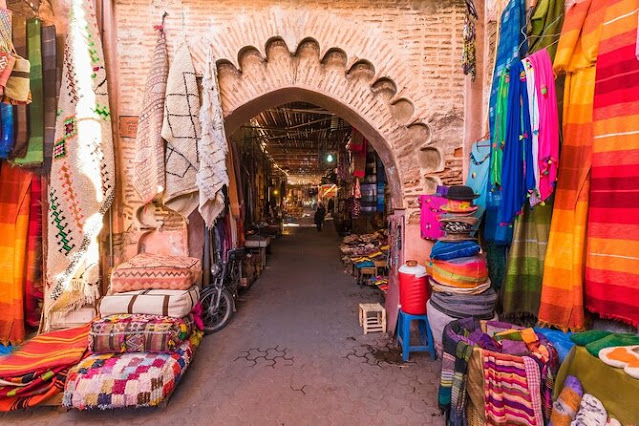:Introduction
Morocco, officially known as the Kingdom of Morocco, is a fascinating country located in North Africa. It is a land where ancient traditions blend seamlessly with modern influences, creating a unique cultural tapestry. With its diverse geography ranging from the Sahara Desert to the Atlas Mountains, Morocco offers travelers an unforgettable experience. This article delves into Morocco’s culture, history, lifestyle, and the many reasons why it continues to captivate people worldwide.
:Geography and History: Setting the Stage for Culture
Morocco is strategically situated on the northwestern tip of Africa, bordered by the Atlantic
Ocean and the Mediterranean Sea. Its geography is diverse, with sprawling deserts, fertile plains, and rugged mountains. This diverse landscape has significantly influenced the culture and lifestyle of its people.
Historically, Morocco has been a melting pot of various civilizations, including the Berbers (the indigenous people), Arabs, Phoenicians, Romans, and later the French and Spanish colonizers. Each group left an indelible mark on Morocco’s culture, architecture, and traditions.
Moroccan Culture: A Blend of Influences
1. Language and Communication
French is widely spoken due to the colonial legacy. Many Moroccans also speak Spanish and English, especially in urban areas and tourist centers. This linguistic diversity reflects the country’s complex history and multicultural identity.
2. Traditional Clothing
Moroccan traditional clothing is colorful and elegant. The most iconic garment is the djellaba, a long, loose robe with a hood worn by both men and women. Women often wear kaftans, elaborately decorated dresses used for special occasions. In rural areas, traditional clothing remains an essential part of daily life and cultural identity.
3. Cuisine: A Feast for the Senses
Moroccan cuisine is renowned worldwide for its rich flavors and unique combinations of spices. Dishes like tagine (slow-cooked stew), couscous, and pastilla (a sweet and savory pie) are staples of Moroccan cooking. Spices such as saffron, cumin, coriander, and cinnamon give the food its distinctive taste. Moroccan tea, especially mint tea, is a symbol of hospitality and is often served with sweets.
4. Music and Arts
Morocco has a vibrant musical heritage, with styles varying from the traditional Gnawa music of the south to Andalusian classical music in the north. Music is deeply intertwined with religious and social ceremonies. Moroccan arts also include intricate zellige tilework, beautiful pottery, and traditional weaving.
Morocco hosts numerous festivals that celebrate its culture and traditions. The Mawazine Festival in Rabat showcases international music stars alongside local artists. The Festival of Roses in the Valley of Roses celebrates the annual rose harvest with music, dance, and traditional costumes.
Religious festivals such as Eid al-Fitr and Eid al-Adha are celebrated nationwide with prayers, feasting, and family gatherings. The ancient Imilchil Marriage Festival is a Berber tradition where tribes come together to find marriage partners.
:Moroccan Architecture: A Reflection of History
Moroccan architecture is famous for its stunning designs, blending Islamic, Berber, and Mediterranean influences. Key features include ornate mashrabiya screens, colorful zellige tiles, and intricately carved wooden doors.
The cities of Marrakech, Fes, and Chefchaouen are renowned for their historic medinas — labyrinthine old towns filled with markets (souks), mosques, and palaces. The Hassan II Mosque in Casablanca is one of the largest and most beautiful mosques in the world.
:Moroccan Society and Lifestyle
Moroccan society is deeply rooted in family and community values. Hospitality is a cornerstone of Moroccan culture, and visitors often experience warm welcomes and generous hospitality.
Family life tends to be traditional, with strong respect for elders and communal living. Urban areas are modernizing rapidly, but many rural regions maintain traditional lifestyles.
:Tourism in Morocco: Experiencing the Culture Firsthand
Morocco attracts millions of tourists every year, drawn by its history, culture, and natural beauty :Popular destinations include
• Marrakech: Known as the “Red City,” famous for its bustling souks, vibrant squares like Jemaa el-Fnaa, and stunning palaces.
• Fes: The spiritual and cultural heart of Morocco, home to one of the world’s oldest universities.
• Chefchaouen: The “Blue City,” famous for its blue-painted streets and buildings.
• Sahara Desert: Visitors can experience camel trekking, star gazing, and desert camps.
Tourism supports many local crafts and traditions like Marzouga, helping preserve Morocco’s cultural heritage.
Conclusion
Morocco’s rich culture and history make it a unique destination that offers a blend of tradition and modernity. From its diverse languages and colorful clothing to its flavorful cuisine and stunning architecture, Morocco is a country that celebrates its heritage while embracing the future. Whether you are a traveler, a history enthusiast, or simply curious about new cultures, Morocco promises a journey filled with unforgettable experiences.















